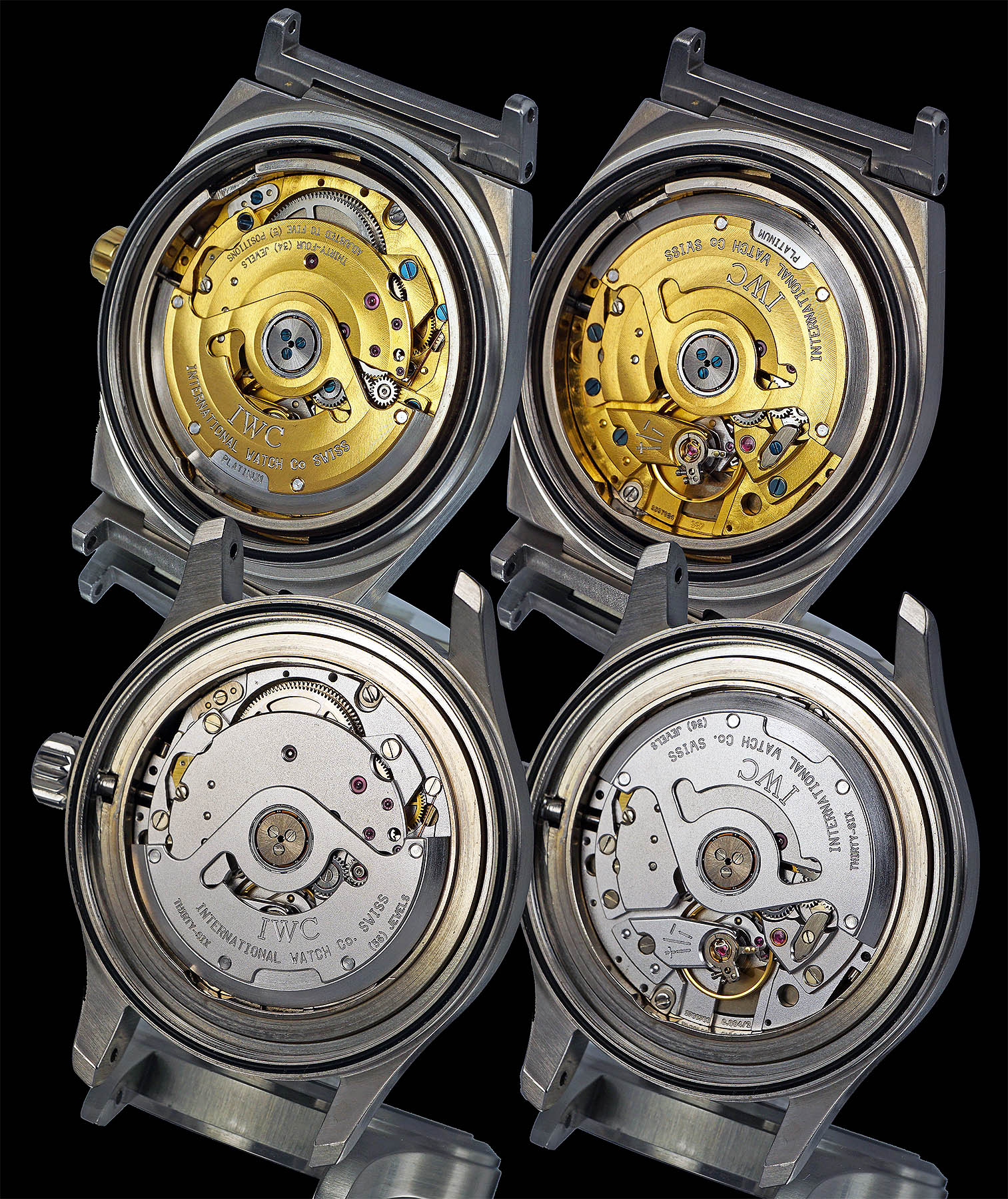Thanks for the interesting comparison.
Techncially, there's slightly more than simply a finishing difference be wen the 884 and 887 movements. As Walt Odets reported:
Interestingly, the 887 is shown by IWC as the base movement from which the 884 was developed; a development, no doubt, to hold down the cost of the Mark XII, which is almost a few thousand cheaper than an equivalent Ingenieur. An examination of the two movements reveals that they share all but nine parts. The main plate, barrel bridge, train wheel bridge, pallet bridge, and balance cock are different because of the 887's gilding, perlage, and Geneva decoration. The rotor is different because of its gilding and finish, and by virtue of its platinum peripheral weight (in place of the 884's base metal piece).And three functional pieces--the center seconds pinion, cannon pinion, and hour wheel--also proved to be different. Seconds pinion. These parts, respectively, carry the seconds, minute, and hour hands. The hour wheel, covering the cannon pinion, is show at left. The tip of the center seconds pinion is just visible in the center. The dial of the Mark XII, as it turns out, is slightly thicker, and stands slightly further from the top plate. So these three pieces are slightly longer, about 0.3 millimeter. The seconds pinion is shown above right for comparative length, the original 884 (Mark XII) part on the left.
You can read Walt's article by
clicking here.

